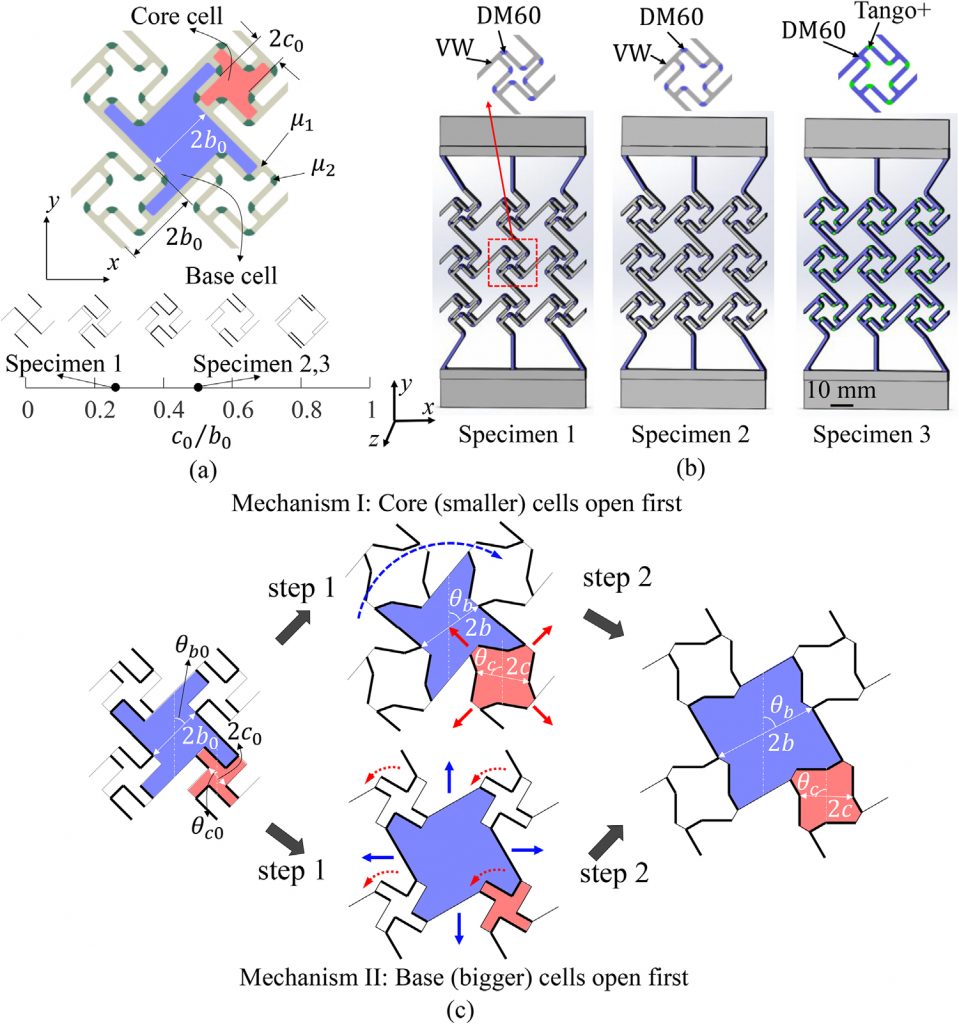A weaving chain of interlocking shapes demonstrates a new material design that has the potential to create smarter medical and electronic devices. Created by researchers at the University of New Hampshire (UNH) the material, when activated, works as a mechanism to transform appearance in a way similar to cephalopod camouflage.
A working prototype of the material has been made using a multimaterial 3D printer (A Stratasys Objet, Connex 260) and has been used by the team to help file a patent for the unique structure.
Demo of a Yunyao Jiang and Yaning Li’s metamaterial prototype. Video via Advanced Engineering Materials Supporting Information
How it works
Essentially the material developed at UNH is a concept. It works using an arrangement of base cells and core cells, discernible as mirror images of one another.

When pressure is applied, the core cells are the first to open, allowing a small red counter to fall through first. As the structure continues to expand, the base cells open allowing a bigger, blue counter to fall afterwards.
The counters in this experiment are representative of pigmented cells that mix to create different colors. In cuttlefish, chameleons and other color changing creatures, these cells are called chromatophores, and are responsible for their ability to camouflage.

Scientific hide and seek
Yaning Li, corresponding author of the study and assistant professor of mechanical engineering at UNH, explains the process as follows, “We used two different types of cells, one would open right away and the other would rotate first before opening in the sequence,”
“…you could alter the sequential opening mechanism to create a material that might be dark green when the first cell opened and then change to bright yellow when the second one opened after it.” – Professor Yaning Li, UNH
“What makes this unique is that if each cell is assigned a different color, you could alter the sequential opening mechanism to create a material that might be dark green when the first cell opened and then change to bright yellow when the second one opened after it.”
Li also expresses how the mechanism could be used for particle release, to give a controlled dosage of certain drugs in treatment of conditions such as wound swelling. Yunyao Jiang, lead atuhor and doctoral candidate at UNH, adds, “The order of the cell opening can also be altered via geometry and material combination to alter the behavior of the cells and increase the number of potential applications.”
Further reading
A paper presenting the camouflaging metamaterial structure developed by Jiang and Li has been published online in the journal Advanced Engineering Materials. The study contributes to an expanding body of research not only in 3D printing to make metamaterials, but also the area of bioinpsired design.
Learn more about all the latest additive manufacturing research by subscribing to the 3D Printing Industry newsletter, following us on Twitter and liking us on Facebook. Check out and register 3D printing events near you here.
Featured image shows a 3D printed prototype of Yunyao Jiang and Yaning Li’s camouflaging metamaterial. Photo via UNH



